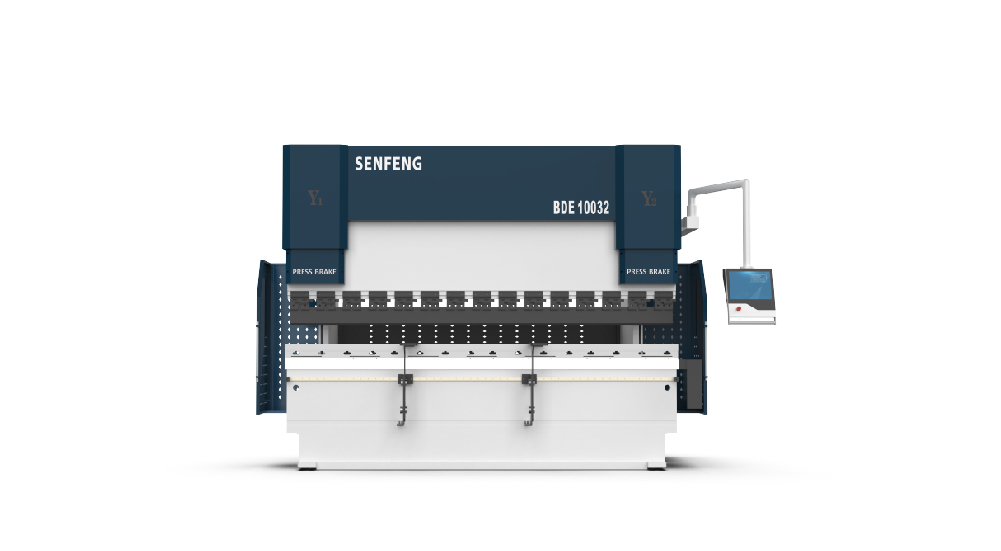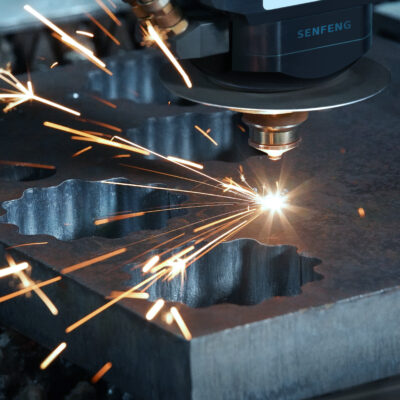Introduction
A press brake is a device that uses dies to bend metal sheets. It uses the relative motion between upper and lower dies to bend metal sheets into the desired angle and shape. It is one of the most commonly used devices in sheet metal processing. Among the different types available, two stand out: the hydraulic press brake and the all-electric press brake.
While hydraulic models have dominated the industry for decades, all-electric press brakes are quickly gaining attention for their efficiency, precision, and eco-friendly design. In this article, we’ll provide a detailed comparison to help manufacturers choose the right machine for their production needs.
What is a Hydraulic Press Brake?
A hydraulic press brake relies on hydraulic cylinders filled with oil to generate pressing force. The downward motion of the ram is controlled by the hydraulic system, making it ideal for heavy-duty bending.

Advantages of Hydraulic Press Brakes
1.Strong force for heavy-duty bending.
2.Lower purchase price compared to electric models.
3.Widely available spare parts and service technicians.
4.Suitable for large-scale, less precision-sensitive production.
Common Applications:
1.Construction machinery parts
2.Automotive components
3.Heavy-duty structural steel fabrication
What is an All-Electric Press Brake?
An all-electric press brake uses servo motors, ball screws, or rack-and-pinion systems to drive the ram, eliminating the need for hydraulic oil. These machines are designed for high precision, energy efficiency, and clean operation.
Advantages of All-Electric Press Brakes
1.Unmatched accuracy and repeatability.
2.Reduced operating costs due to energy efficiency.
3.Quiet and clean working environment.
4.Perfect for industries requiring precision, automation, and sustainability.
Common Applications:
1.Electronics and telecom enclosures
2.Medical device fabrication
3.Kitchenware and home appliances
4.Solar and renewable energy sheet metal
All-Electric Press Brake vs Hydraulic Press Brake
| Factor | Hydraulic Press Brake | All-Electric Press Brake |
| Power Source | Hydraulic cylinders & oil | Servo motors & ball screws |
| Bending Capacity | Excellent for thick and heavy plates | Best for thin to medium sheets |
| Precision | ±0.01–0.02 mm | ±0.005 mm |
| Energy Efficiency | Consumes more power, continuous pump running | Saves up to 50% energy, power on demand |
| Maintenance | Requires oil changes, seals replacement | Low maintenance, no hydraulic oil |
| Environmental Impact | Risk of oil leakage, higher noise | Clean, quiet, eco-friendly |
| Speed | Moderate, slower cycle times | Faster cycle times, higher productivity |
| Cost | Lower initial purchase price | Higher upfront investment |
| Best Fit | Heavy-duty fabrication shops | Precision industries & high-mix production |
Which Press Brake Should You Choose?
The decision depends on your business needs:
If you work with thick steel plates, heavy-duty applications, and need high tonnage, a hydraulic press brake remains the most practical solution.
If your focus is on precision parts, thin to medium sheets, and energy savings, an all-electric press brake provides long-term value despite higher initial costs.
Conclusion
Both hydraulic and all-electric press brakes play vital roles in sheet metal processing. Hydraulic models deliver brute force and proven reliability, while all-electric models set new standards for precision, energy efficiency, and eco-friendliness.
By carefully evaluating your production requirements, material thickness, and long-term operating costs, you can select the right press brake to maximize your shop’s productivity and profitability.

